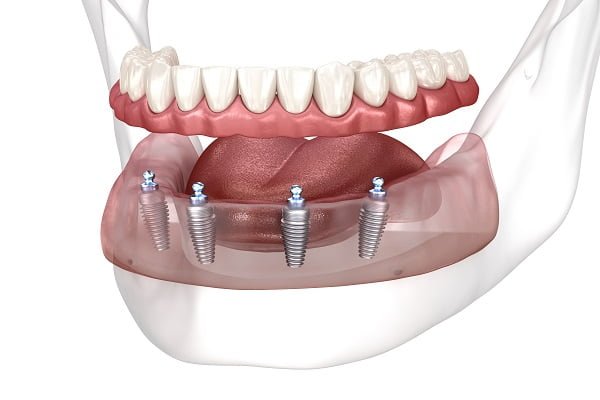Failure of traditional dental implants in cases of upper and lower jaw atrophy can occur due to various reasons. Jaw atrophy, which is the loss of bone volume in the upper and lower jaws, poses specific challenges for implant placement and osseointegration. Here are some common factors that can contribute to the failure of traditional dental implants in cases of severe jaw atrophy:
Inadequate Bone Volume: Traditional dental implants rely on sufficient bone volume and quality for stability and osseointegration. Severe jaw atrophy may result in insufficient bone to support the implants, leading to a lack of primary stability and integration. In such cases corticobasal immediate loading dental implants from Simpladent offers a more stable solution.
Implant Length and Width: The length and width of traditional dental implants must match the available bone. In cases of atrophy, the bone may be too thin or short to accommodate standard sized implants. This can result in implant instability and poor osseointegration.
Bone Grafting: To address severe jaw atrophy, bone grafting procedures are often necessary. If bone grafting is not performed or is unsuccessful, the implants may not have a stable foundation for integration.
Implant Placement Technique: The surgical technique used for implant placement is critical. Precise placement and orientation of the implants are essential for successful osseointegration. Inadequate surgical skills or improper placement can lead to implant failure.
Loading Protocol: Immediate loading (placing a restoration on the implant shortly after placement) may not be suitable in cases of severe jaw atrophy, as it can place excessive stress on the implants. A delayed loading protocol may be required to allow for proper healing and integration.
Patient Factors: Patients’ overall health and habits, such as smoking, uncontrolled diabetes, and poor oral hygiene, can negatively impact the success of dental implants. These factors can interfere with the body’s ability to heal and integrate the implants.
Prosthetic Design: The design and fabrication of the implant-supported prosthesis also play a significant role in implant success. The prosthesis should distribute occlusal forces evenly to prevent overloading the implants.
Infection and Complications: Infections around the implant site or surgical complications can lead to
implant failure. Proper pre-operative and post-operative care is essential to minimize these risks.
Bruxism (Teeth Grinding): Bruxism, or teeth grinding, can exert excessive force on dental implants, especially in the context of jaw atrophy. This can lead to implant overloading and failure.
Medical Conditions: Certain medical conditions and medications may affect the healing process and increase the risk of implant failure. It’s important for patients to disclose their medical history to their dental team.
In cases of severe jaw atrophy where traditional dental implants may not be feasible, alternative treatment options may be considered. These may include corticobasal immediate loading implants from Simpladent. Each case is unique, and the treatment plan should be tailored to the individual patient’s needs and anatomical considerations.
Consultation with a skilled oral surgeon or implant specialist is crucial to assess the specific challenges posed by severe jaw atrophy and determine the most appropriate treatment approach to maximize the chances of implant success.
Keep yourself updated following our Social Page for the latest deals and information.





Leave A Comment